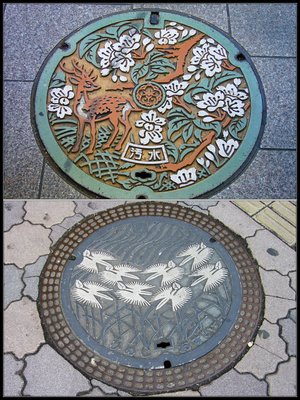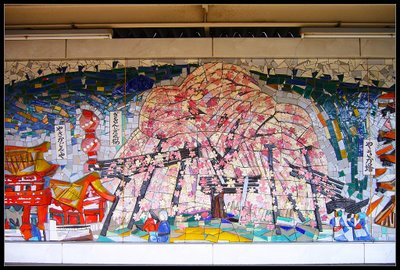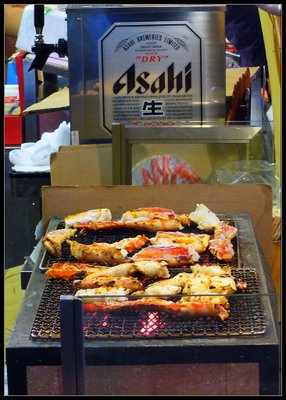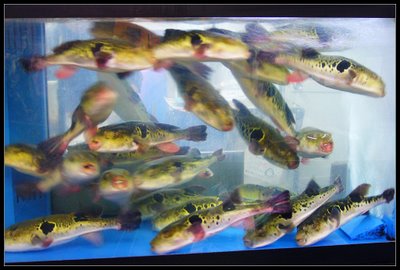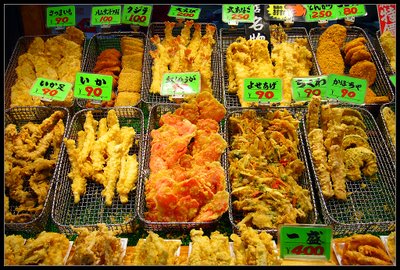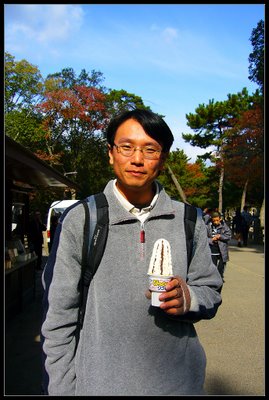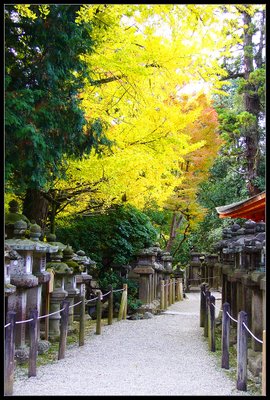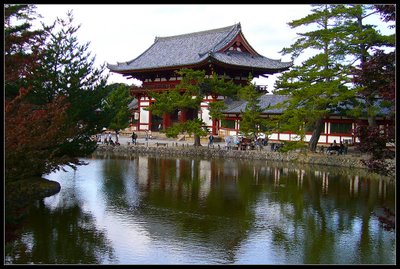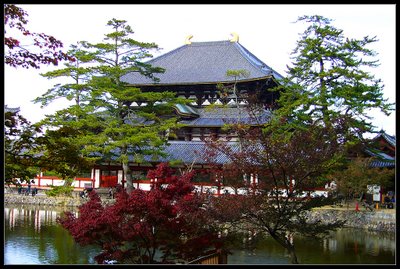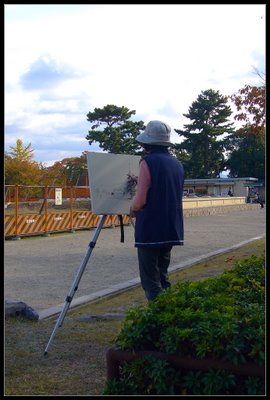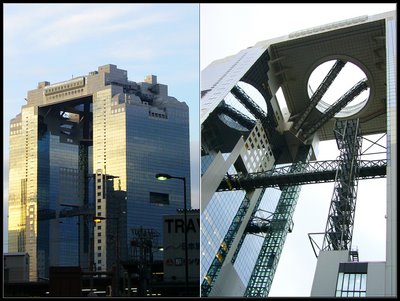My last picture for this trip.
Apart from the blazing maple leaves - a highlight of this trip, there are still some flowers blooming in this month.
Sunday, November 20, 2005

Omikuji
Omikuji are fortune telling paper slips found at many shrines and temples. Randomly drawn, they contain predictions ranging from daikichi ("great good luck") to daikyo ("great bad luck"). By tying the piece of paper around a tree's branch, good fortune will come true or bad fortune can be averted.
Saturday, November 19, 2005
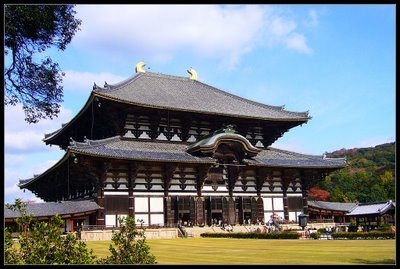
We then walk further to Todaiji Temple ("Great Eastern Temple")
It is one of Japan's most famous and historically significant temples and a landmark of Nara.
Todaiji was constructed in 752 as the head temple of all provincial Buddhist temples of Japan and grew so powerful that the capital was moved from Nara to Nagaoka in 784 in order to lower its influence on government affairs.



Today Nara is our main destination. It is the Japan's first permanent capital established in the year 710 formerly known as Heijo.
Welcome by many freely roaming deer. They are considered messengers of the gods in Shinto, and have become a symbol of the city and have even been designated a National Treasure.

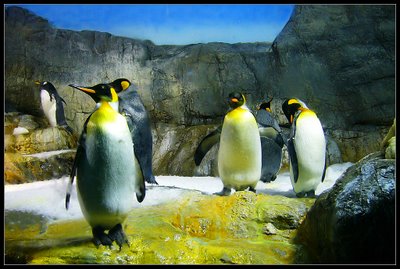

Marine life is displayed in 15 tanks, each representing a specific region of the Pacific Rim. The central tank, representing the Pacifc Ocean, is nine meters deep.
We start our tour of the aquarium on the 8th floor and slowly spiral down floor by floor around the central tank. Some of the tanks stretch over several floors, making it possible to observe the animals from different depths and perspectives.
Osaka Aquarium is located in the Tempozan Harbor Village of Osaka's Port area.
Subscribe to:
Posts (Atom)
